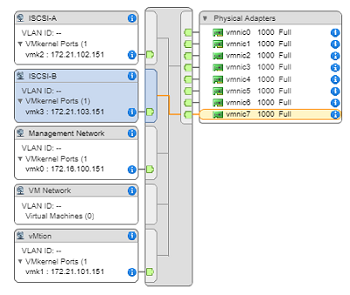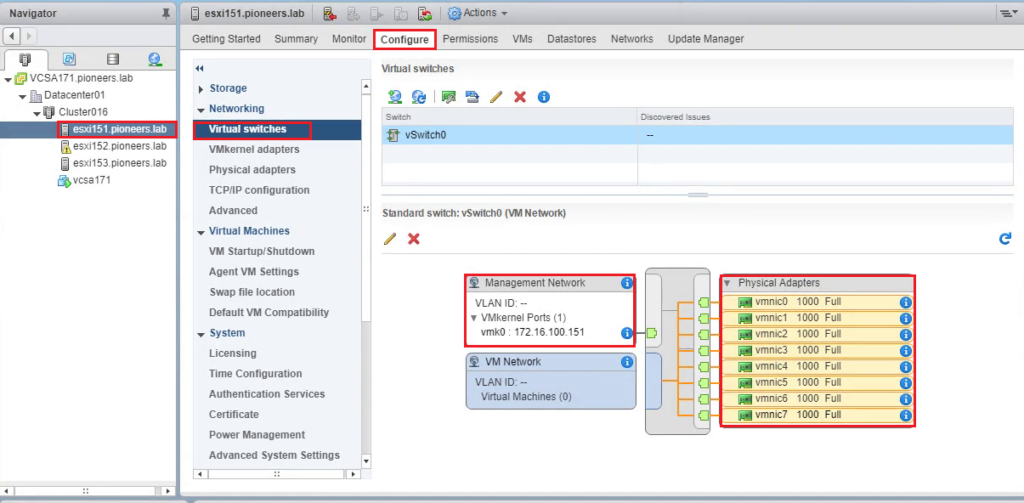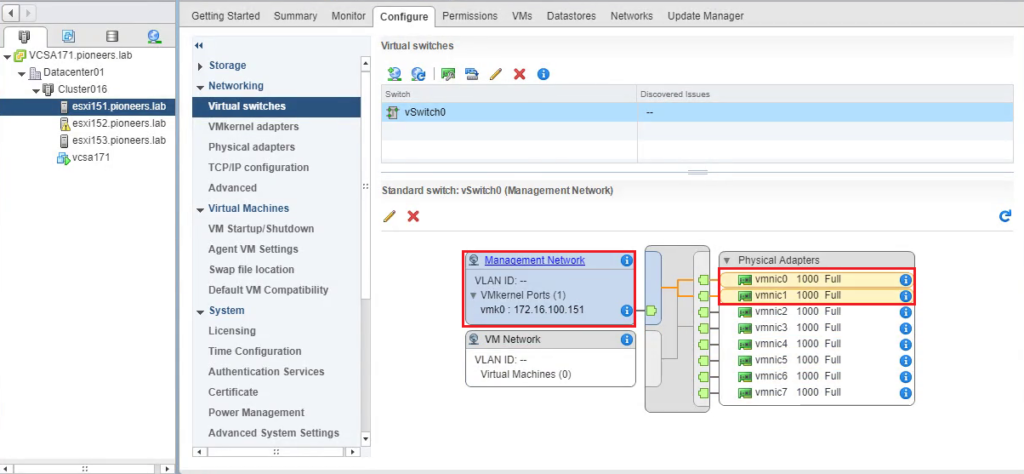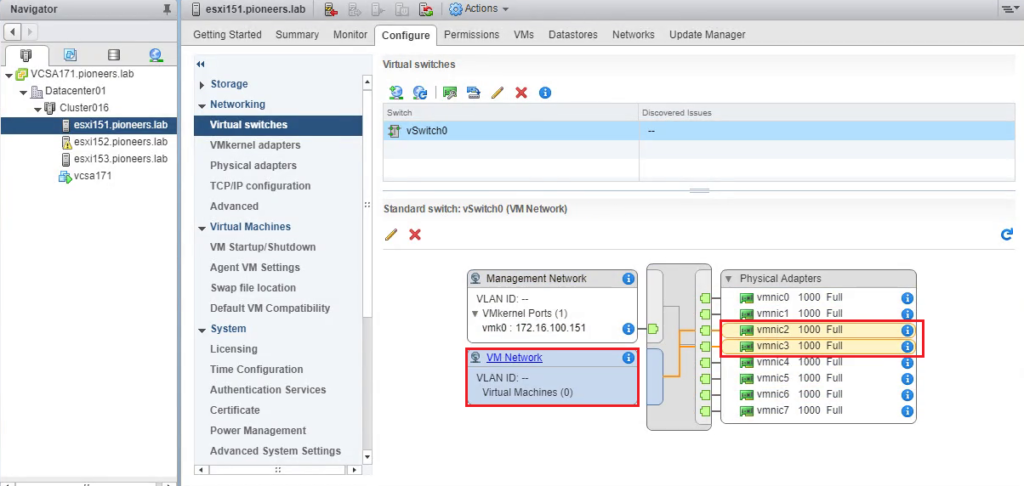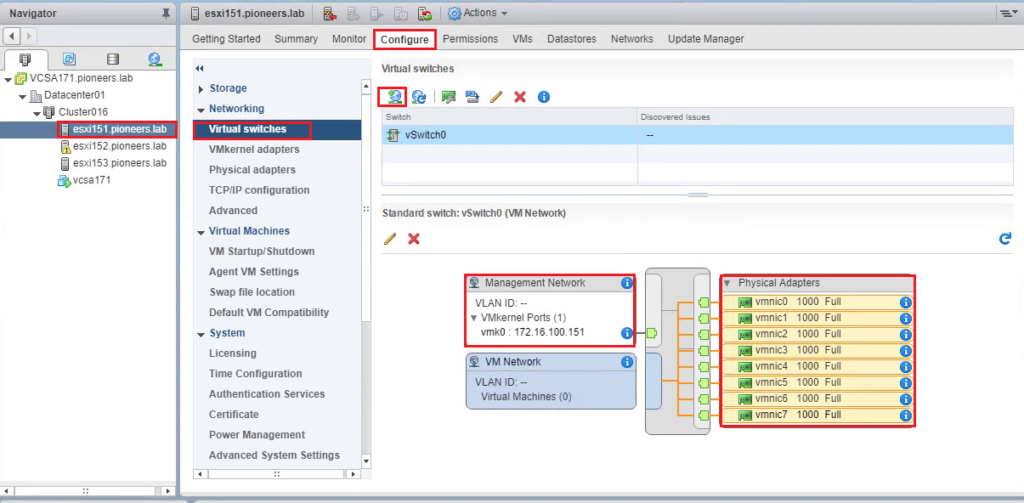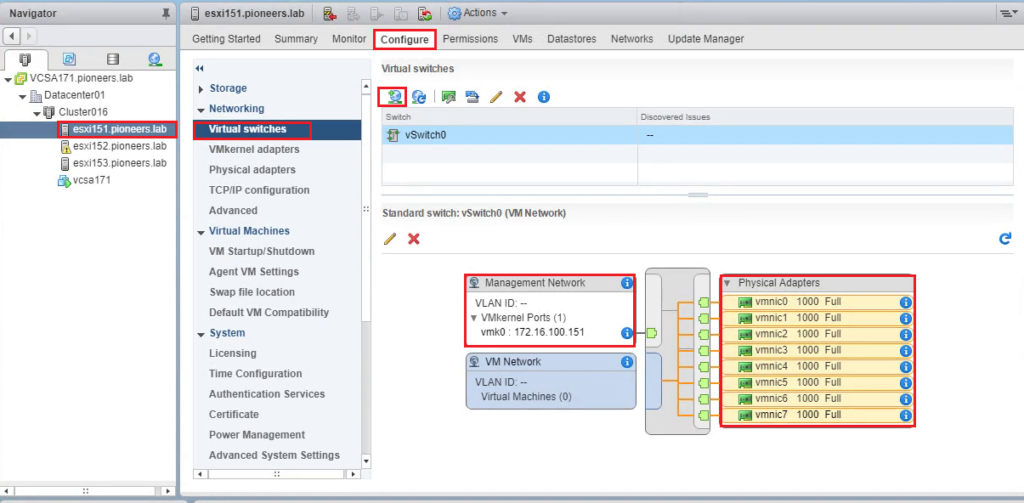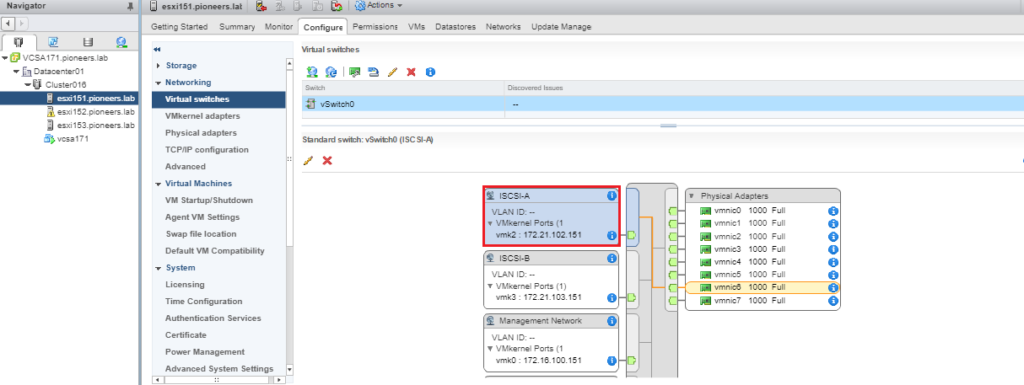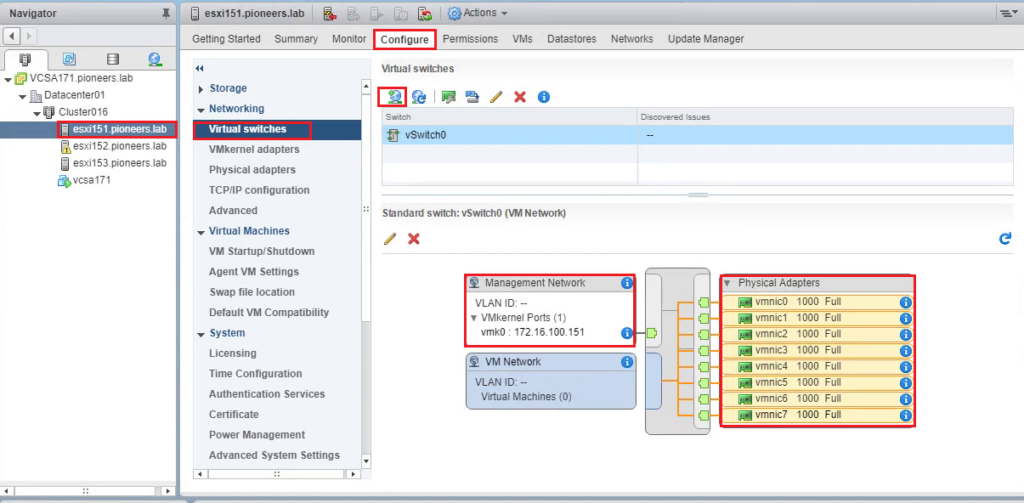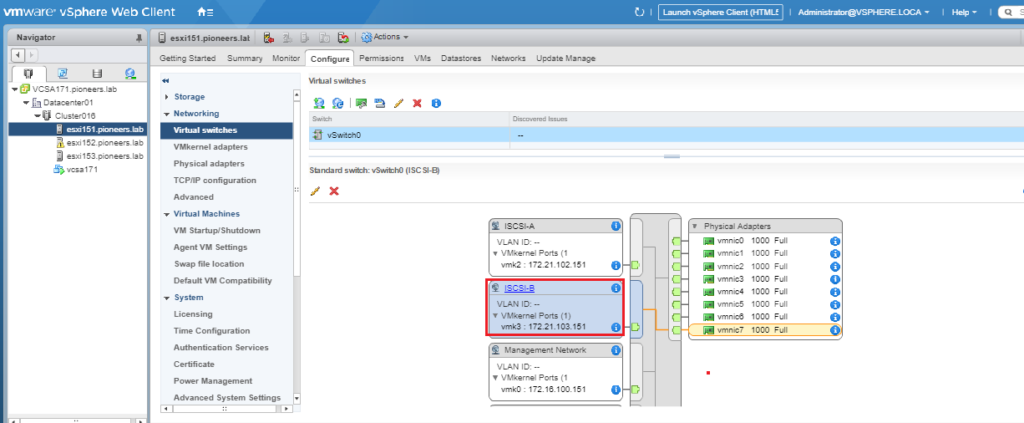Standard Virtual Switch VSS introduction
standard switch (sometimes called vSwitch) is created by default when ESXi is installed.
Like its physical Ethernet counterpart,
a standard switch works at layer 2, forwards frames to other switch ports based on the MAC address, and supports features such as VLANs and port channels.
Standard switches have to be connected to the ESXi host’s physical NICs as uplinks to communicate with the rest of the network.
They are configured at the host level, meaning that you must create and manage vSphere Standard Switches independently on each ESXi host.
Standard switches provide the network connectivity:
- between virtual machines within the same ESXi host.
- between virtual machines on different ESXi hosts.
- between virtual and physical machines on the network.
- for VMkernel access to networks for vMotion, iSCSI, NFS, or Fault Tolerance logging (and management on ESXi).
A standard switch has the ability to move layer 2 traffic between virtual machines internally.
This means that two virtual machines on the same subnet and on the same ESXi host can communicate directly;
the traffic does not need to leave the ESXi host.
Standard switches also support some advanced networking features, such as
- outbound traffic shaping,
- NIC teaming, different security policies,
- Cisco Discovery Protocol (CDP) support, etc.
You can have a total of 4096 standard switch ports per host, a maximum of 1016 active ports per host, and 512 port groups per switch.
manage vswitch0 on ESXI151
as we have mentioned :
each ESXI server has been assigned with 8 physical ethernet : from NIC0 to NIC7 > virtual stand switch VSS call them from vmnic0 to vmnic7
vswitch0 on ESXI151 [which already created during ESXI installation] : will be manage as the following :
- vmic0 + vmnic1 :for port group called management network with IP address 172.16.100.151
- vmic2 + vmnic3 :for port group called VM traffic without IP address since VM itself will use its IP address
- vmic4 + vmnic5 :for port group called vMotion [migrating VM from ESXI host to another] with IP address 172.21.101.151
- vmic6 :for port group called ISCSI-A adapter [to connect to ISCSI storage with IP address 172.21.102.151
- vmnic7 :for port group called ISCSI-B adapter [to connect to ISCSI storage with IP address 172.21.103.151
During an ESXi installation: a virtual switch named vSwitch0 is created.
It contains two port groups: one for virtual machines (named VM Network) and one for management (named Management Network). You can use the [vSphere Web Client] or [vCenter application] to add a new virtual switch.
so he first step just to assign
- vmic0 + vmnic1 :for port group management network
- vmic2 + vmnic3 :for port group VM traffic
then we will create other port group
create port group [vMotion] on ESXI151
vMotion is used to move running VM from ESXI host to another and also used to move VM Hard Disk [vmdk file ] from Datastore to another
this heavy traffic required separate NIC [in esxi called vmnic ]
we will create new port group called vmotion [you can call it any name] and assign vmnic4 + vminc5 for vmotion
which IP address to be used for vmotion?
: we highly recommend to use IP address different from LAB or server farm to avoid any congestion
vMotion will be covered in separate article , and here we just create vmotion port group to prove the concept
create port group for ISCSI adapter
ISCSI adapter is used to enable ESXI host to connect to remote storage to local datastore
this kind of heavy require separate ethernet connection
in port group [network management ] : we have assigned vmnic0 and vmnic1 as redundant
alos in port group [vmotion ] : we have assigned vmnic4 and vmnic5 as redundant
ISCSI adapter does NOT support ethernet redundancy :- so we will create two port group to workaround this issue :
port group ISCI-A with IP address 172.21.102.151
and port group ISCI-A with IP address 172.21.103.151
ISCSI adapter connection with remote storage : will have article to explain it in advance , here we just prove the concept of [ virtual switch
now its’ time to create port group ISCSI-B and assign it with vmnic7 with ip address 172.21.103.151
